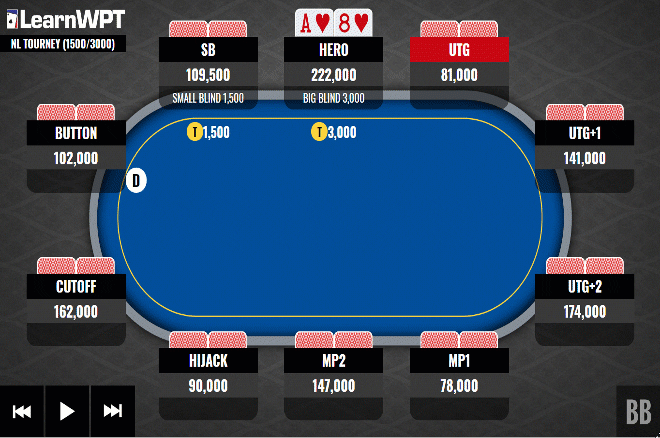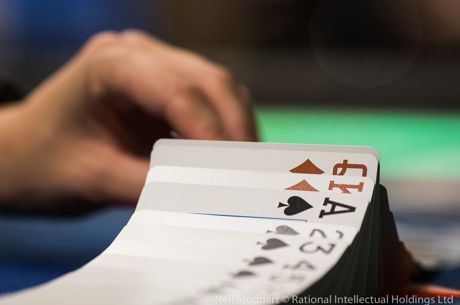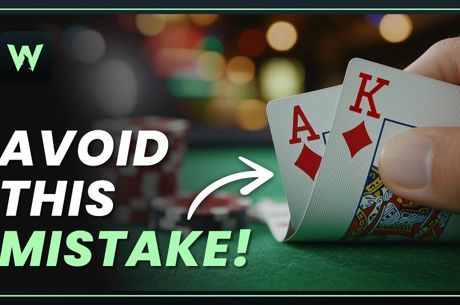Flopping the Nut Flush in a Limped Pot

DECISION POINT: In a no-limit hold'em tournament, you are in the big blind and watch a middle position player limp, the button also call, and the small blind fold. You look down at A♥8♥ and choose to check, and the flop comes Q♥4♥6♥. With the nut flush you check and both of your opponents check behind, then the turn brings the 10♥.
PRO ANSWER: Checking with our whole range is the best play on the flop. However, once it gets checked through, we should bet the turn the majority of the time. We will tend to make more in the long run by allowing ourselves the chance to build the pot.
Note that we will not win any more chips from our opponents the majority of the time. We hold the only good card to have on this board. That doesn't necessarily mean that we will make more by trying to induce a bluff, since there aren't any natural bluffs for opponents to have on this board either.
If we do check the turn again (which is okay some of the time, but not as a primary play), we should definitely bet the river. It's very likely to get checked through again on the river since nothing has changed, so betting out is the only way to win additional chips.
Typically speaking, when a monotone flop gets checked through and we have the nuts on the turn, we should simply bet out.
Betting is the best play.
LearnWPT is a poker training site dedicated to transforming the poker games of rank beginners, skilled amateurs, and aspiring professionals. Offering both Live Workshops and Online Training, is a one-stop shop for poker education, designed to provide all the tools a player needs to become a winner. Visit LearnWPT.com today and get 2 Free Strategy Episodes that will immediately impact how you play. LearnWPT.com - Think Like a Pro!









